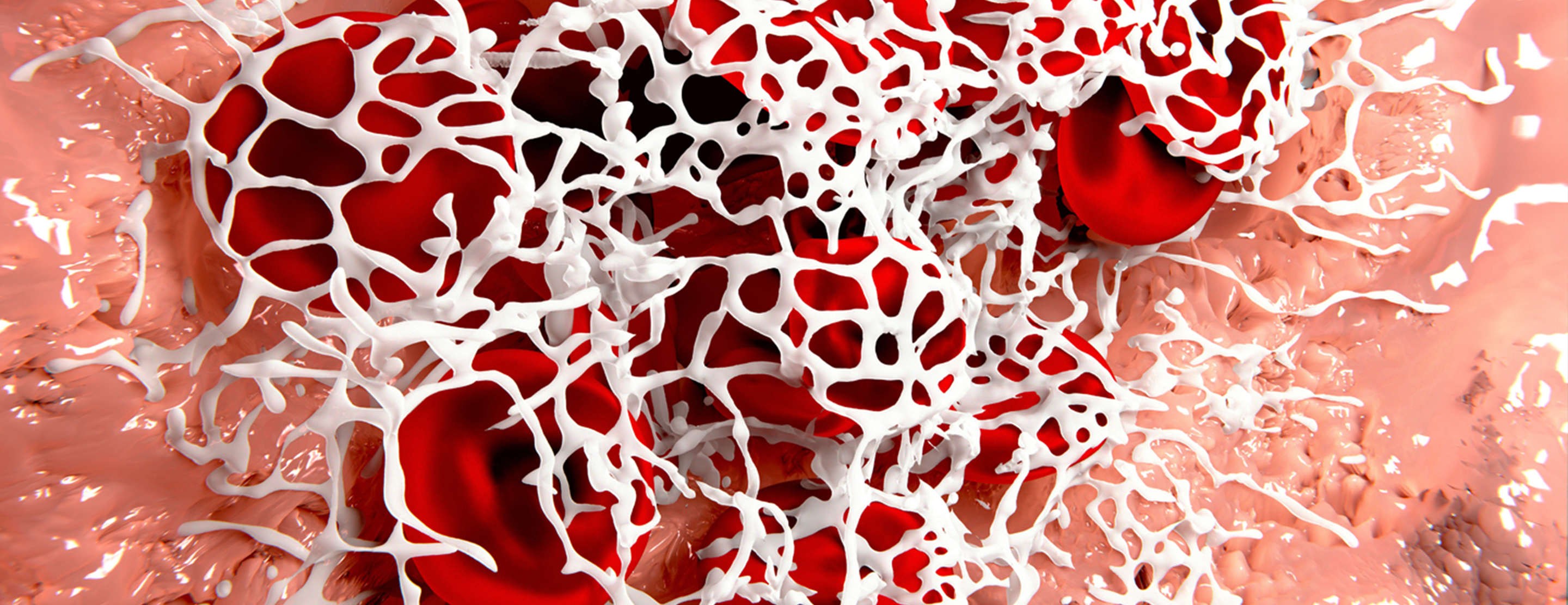
Fibrinogen blood test
Definition
Fibrinogen is a protein produced by the liver. This protein helps stop bleeding by helping blood clots to form. A blood test can be done to tell how much fibrinogen you have in the blood.
Alternative Names
Serum fibrinogen; Plasma fibrinogen; Factor I; Hypofibrinogenemia test
How the Test is Performed
A
How to Prepare for the Test
No special preparation is needed.
How the Test will Feel
When the needle is inserted to draw blood, some people feel moderate pain. Others feel only a prick or stinging. Afterward, there may be some throbbing or slight bruising. This soon goes away.
Why the Test is Performed
Your doctor may order this test if you have problems with blood clotting, such as excessive bleeding.
Normal Results
The normal range is 200 to 400 mg/dL (2.0 to 4.0 g/L).
Normal value ranges may vary slightly among different laboratories. Some labs use different measurements or may test different specimens. Talk to your doctor about the meaning of your specific test results.
What Abnormal Results Mean
Abnormal results may be due to:
- The body using up too much fibrinogen, such as in
disseminated intravascular coagulation (DIC) - Fibrinogen deficiency (from birth, or acquired after birth)
- Breakdown of fibrin (
fibrinolysis ) - Too much bleeding (hemorrhage)
The test may also be performed during pregnancy if the placenta separates from its attachment to the uterus wall (
Risks
There is little risk involved with having your blood taken. Veins and arteries vary in size from one person to another, and from one side of the body to the other. Obtaining a blood sample from some people may be more difficult than from others.
Other risks associated with having blood drawn are slight, but may include:
- Excessive bleeding
- Fainting or feeling lightheaded
- Multiple punctures to locate veins
- Hematoma (blood accumulating under the skin)
- Infection (a slight risk any time the skin is broken)
This test is most often performed on people who have bleeding disorders. The risk for excessive bleeding is slightly greater in such people than it is for those who do not have bleeding problems.
References
Chernecky CC, Berger BJ. Fibrinogen (factor I) - plasma. In: Chernecky CC, Berger BJ, eds. Laboratory Tests and Diagnostic Procedures. 6th ed. St Louis, MO: Elsevier Saunders; 2013:525.
Pai M. Laboratory evaluation of hemostatic and thrombotic disorders. In: Hoffman R, Benz EJ, Silberstein LE, et al, eds. Hematology: Basic Principles and Practice. 7th ed. Philadelphia, PA: Elsevier; 2018:chap 129.
Review Date: 01/29/2019
The information provided herein should not be used during any medical emergency or for the diagnosis or treatment of any medical condition. A licensed physician should be consulted for diagnosis and treatment of any and all medical conditions. Call 911 for all medical emergencies. Links to other sites are provided for information only -- they do not constitute endorsements of those other sites. Copyright ©2019 A.D.A.M., Inc., as modified by University of California San Francisco. Any duplication or distribution of the information contained herein is strictly prohibited.
Information developed by A.D.A.M., Inc. regarding tests and test results may not directly correspond with information provided by UCSF Health. Please discuss with your doctor any questions or concerns you may have.





